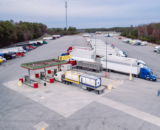As the comment period closed on the Environmental Protection Agency’s proposed stricter ozone standard, industry groups warned that more rigid standards would hurt the U.S. economy and middle income families.
The American Petroleum Institute (API) said new standards would impose unachievable emission reduction requirements and that many states and localities have not yet begun to implement the 2008 regulation of 75 parts per billion.
EPA proposed to lower the National Ambient Air Quality Standard (NAAQS) from the current 75 parts per billion (ppb) to 65-70 ppb.
“If President Obama is serious about lifting up the middle class and closing the income inequality gap, the last thing his administration should do is threaten jobs and our energy and manufacturing renaissance with unnecessary new regulations,” Howard Feldman, API’s director of regulatory affairs, said, according to published reports.
Lowering the standard could result in costly changes in operations for fuel marketers. Industry groups have said it could increase the cost of motor fuels and create bottlenecks in the gasoline marketplace.
Areas designated as "nonattainment" for not meeting the ozone standard often must require reformulated gasoline or a lower reid vapor pressure (RVP) for gasoline.
Sens. Joe Manchin, D-W.Va., and John Thune, R-S.D., and Reps. Pete Olson, R-Texas, and Robert Latta, R-Ohio, on March 17 introduced bills that would prevent EPA from proposing a lower standard until at least 85 percent of U.S. counties that do not meet the current limit come into compliance.
Republicans on the Senate Environment and Public Works (EPW) Committee also recently said in a letter to EPA that the agency underestimates the real costs of its proposal.
The National Association of Manufacturers (NAM) has said that lowering the standard to 65 ppb would cost $1.7 trillion in GDP from 2017 to 2040. EPA estimates a range of $3.9 billion to about $39 billion in 2025.
Subscribe to Updates
NATSO provides a breadth of information created to strengthen travel plazas’ ability to meet the needs of the travelling public in an age of disruption. This includes knowledge filled blog posts, articles and publications. If you would like to receive a digest of blog post and articles directly in your inbox, please provide your name, email and the frequency of the updates you want to receive the email digest.


